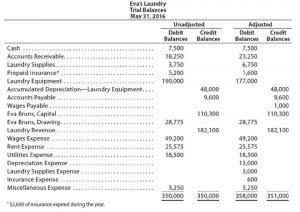
When you’re tracking assets like cash or inventory, the more you accumulate, the higher your debit balance climbs. Similarly, as your business incurs expenses, from rent to office supplies, these costs also nudge your debit balance upward. It’s a fundamental principle that acts as compass for financial navigation, guiding you through the ocean of numbers to a harbor of consistency and accuracy. Knowing the normal balances of accounts is pivotal for recording transactions correctly. It aids in maintaining accurate financial records and statements that mirror the true financial position of your business. Misunderstanding normal balances could lead to errors in your accounting records, which could misrepresent your business’s financial health and misinform decision-making.
The Best Structure for the Normal Balance of Accounts
To keep a company’s financial data organized, accountants developed a system that sorts transactions into records called accounts. When a company’s accounting system is set up, the accounts most likely to be affected by the company’s transactions are identified and listed out. Depending on the size of a company and the complexity of its business what is normal balance in accounting operations, the chart of accounts may list as few as thirty accounts or as many as thousands.

Debits vs credits
Further, the amounts entered as debits must be equal to the amounts entered as credits. If this is done for every transaction and without errors, then all the amounts appearing in the accounts will have the total amount of debits equal to the total amount of credits. When you place an amount on the normal balance side, https://www.bookstime.com/ you are increasing the account. If you put an amount on the opposite side, you are decreasing that account. This means that when invoices are received from suppliers, the accounts payable account is credited, and when payments are made to suppliers, the accounts payable account is debited.
Applying Normal Balances in Transactions
Temporary accounts are generally the income statement accounts. In other words, the temporary accounts are the accounts used for recording and storing a company’s revenues, expenses, gains, and losses for the current accounting year. In other words, the permanent accounts are the accounts used to record and store a company’s amounts from transactions involving assets, liabilities, and owner’s (stockholders’) equity. This means when a company makes a sale on credit, it records a debit entry in the Accounts Receivable account, increasing its balance.
Why is it important to understand normal balances when looking at financial statements?
These are both asset accounts.He would debit inventory for $10,000 due to the new inventory and credit cash for $10,000 due to the cost. For reference, the chart below sets out the type, side of the accounting equation (AE), and the normal balance of some typical accounts found within a small business bookkeeping system. Following the revenue transfer, all expense account balances are moved to the Income Summary. This step requires crediting each individual expense account to zero out its balance, with a corresponding debit to the Income Summary account for the total amount of expenses.
Summarizing Normal Balances in a Table

For companies in the business of lending money, Interest Revenues are reported in the operating section of the multiple-step income statement. Insurance Expense, Wages Expense, Advertising Expense, Interest Expense are expenses matched with the period of time in the heading of the income statement. Under the accrual basis of accounting, the matching is NOT based on the date that the expenses are paid. The balance sheet reports information as of a date (a point in time). As the entry shows, the bank’s assets increase by the debit of $100 and the bank’s liabilities increase by the credit of $100.
What is the Prudence Concept in Accounting?
- It was started by Luca Pacioli, a Renaissance mathematician, over 500 years ago.
- The normal balance of these accounts, whether it’s a debit or credit, helps maintain the overall balance of your financial books.
- By applying expected transactions to the normal balances of accounts, financial professionals can simulate the effects of business decisions on the company’s financial trajectory.
- However, bloated debit balances, outpacing your revenue growth, might trigger alarm bells.
- If the company buys supplies on credit, the accounts involved are Supplies and Accounts Payable.
- The ending account balance is found by calculating the difference between debits and credits for each account.
- In other words, the permanent accounts are the accounts used to record and store a company’s amounts from transactions involving assets, liabilities, and owner’s (stockholders’) equity.
Understand the fundamental concept of normal balance in accounting. Learn how this core principle defines the natural state of financial accounts. By consistently applying these rules, it becomes much easier to properly record transactions and maintain accurate financial records. In accounting, every financial transaction involves two accounts – one account is debited, and the other is credited. On the other hand, when you receive a payment from a customer, you’d debit your cash account, which has a normal debit balance, increasing it. Conversely, if you’re paying a supplier, you’d increase your accounts payable, also a credit balance account, by crediting it.
The Normal Balance of Accounts – A Short Guide

When a business pays for rent or utilities, these expense accounts are increased with a debit. Yes, while rare, an account HOA Accounting can temporarily have a balance opposite its normal balance. For example, a cash account might temporarily show a credit balance due to an overdraft. However, these situations should be investigated and corrected quickly to accurately reflect the define normal balance in accounting and the true financial position. When a company purchases goods or services on credit, it incurs a liability, and the accounts payable account is credited.
How Cynthia Went from Failing 6 Times to Passing the CPA Exam in 6 Months
When it comes to the world of accounting, maintaining balance is of utmost importance. Every transaction has a corresponding impact on financial statements, and it is crucial to identify the appropriate categories to record these impacts accurately. The statement provides insights into the company’s liquidity and cash management, which are essential for assessing its short-term viability. T-accounts help accountants see how debits and credits affect an account.
Leave a Reply